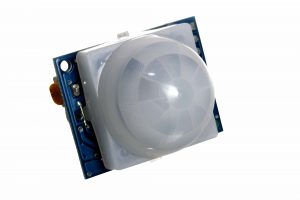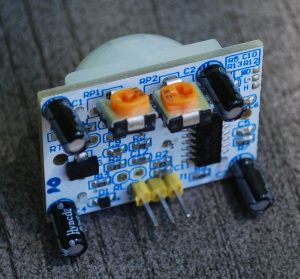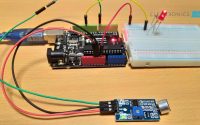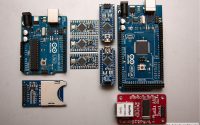PIR Sensor
PIR sensors, or Passive Infrared Sensors, are electronic devices that detect motion by sensing changes in infrared radiation. They are widely used in a variety of applications, including security systems, lighting control, and occupancy sensing. In this blog post, we will take a closer look at PIR sensors and how they work.
PIR sensors typically consist of a pyroelectric sensor, which is a material that generates an electrical current when it is exposed to infrared radiation, and a processing unit. The sensor is usually housed in a plastic or metal casing and is pointed towards the area that needs to be monitored.
When a person or an object moves within the sensor’s field of view, the pyroelectric sensor detects the change in infrared radiation and sends a signal to the processing unit. The processing unit then analyzes the signal and sends it to a microcontroller or a data logger to trigger an action, such as turning on a light or activating an alarm.
PIR sensors are widely used in security systems, as they can detect movement and trigger an alarm, allowing you to protect your home or business from intruders. They are also used in lighting control systems, where they can detect the presence of people and turn lights on and off accordingly, saving energy and reducing costs. PIR sensors can also be used in occupancy sensing applications, such as in offices or public buildings, to detect when a room is empty and turn off lights and other electronic devices to save energy.
PIR sensors have the advantage of being energy efficient, as they only require power when they detect movement. They also have a wide detection range and can detect movement up to 20 meters away, making them suitable for a wide range of applications. They are also relatively inexpensive and easy to install, which makes them a popular choice for DIY projects.
In summary, PIR sensors are widely used electronic devices that detect motion by sensing changes in infrared radiation. They are used in a variety of applications such as security systems, lighting control, and occupancy sensing. They are energy efficient, have a wide detection range and are relatively inexpensive and easy to install, making them an essential tool for a variety of applications. With the advancement of technology, the sensitivity, accuracy, and functionality of PIR sensors are continuously improving, providing users with even more options and capabilities.
We have to connect GND to GND VCC to 5 Volt and now we need a digital pin let’s choose digital pin 2 that’s all with the wiring and the programming is as easy as this well I haven’t promised you too much, have I we define the pin for the sensor we attach it to pin 2 and we define the LED pin LED pin???? yes, the Arduino Uno has a built-in LED that we can trigger in the setup we set the pin, the sensor is attached to, as an input pin and the LED pin as an output pin in the loop we are reading the value of the sensor and if the sensor value is ‘High’ then we set the LED also to ‘High’ to turn it on else.. we turn the LED off oops. mistake… that’s it. let’s upload it to the Arduino and see.
if it works well, the sketch is uploaded to the Arduino and you can see, if I move my hand. ..the orange LED lights up yeah, that’s all the magic yes, it’s a nice, easy sensor ideal for starter projects here we have also two wheels to adjust the sensitivity and for the duration how long the output will be set to high so technically speaking you don’t even need an Arduino for this sensor you can attach a LED with the right resistor and trigger it when it detects movement so a nice sensor even when you don’t use it with the Arduino Bye!





